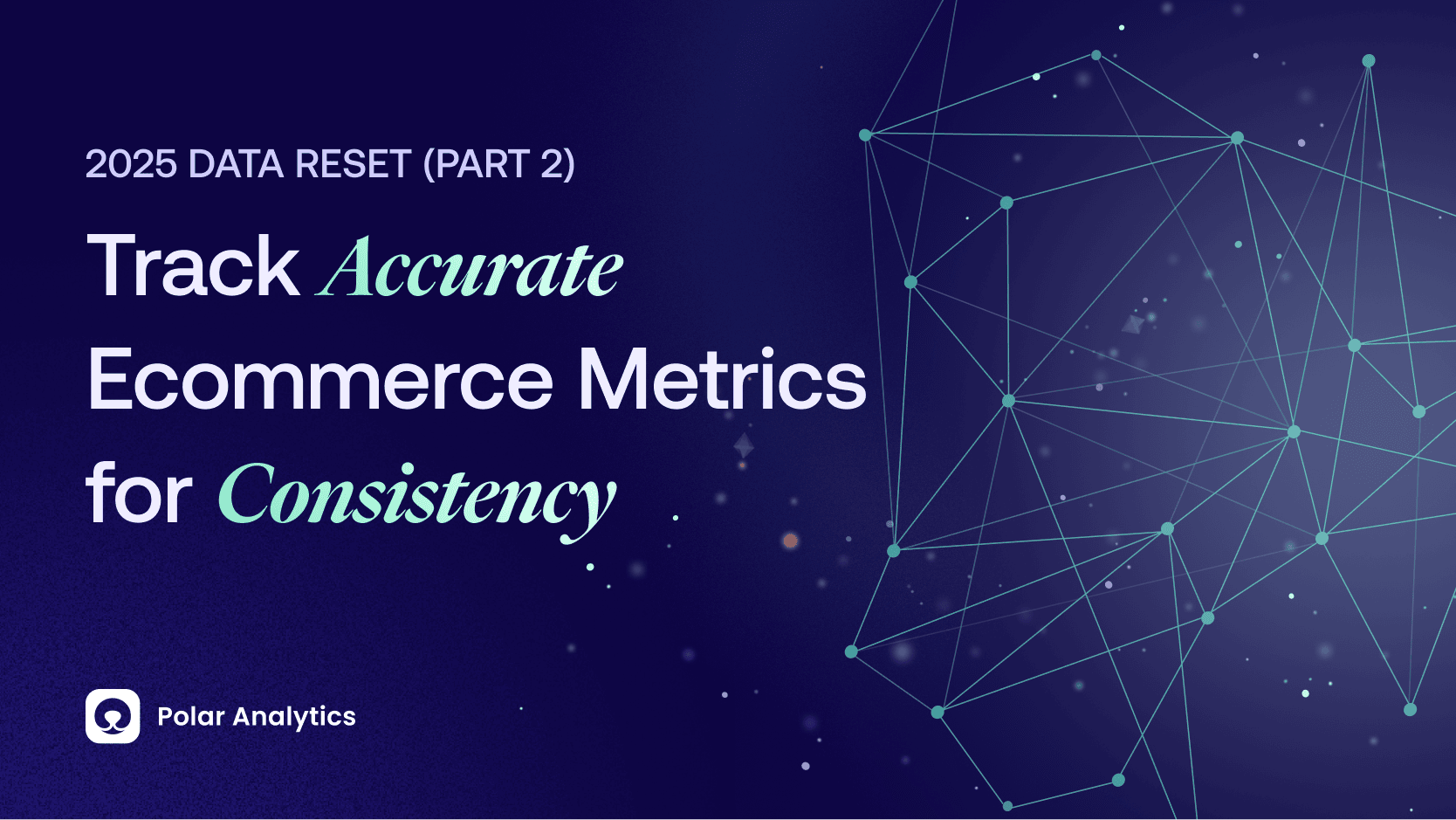Now that you’ve centralized your data in Part 1 of this 2025 Data Reset series, the next crucial step is ensuring the metrics you track are consistent and reliable. Without accurate data, your acquisition costs may be inflated, your marketing decisions misguided, and your brand less profitable.
To achieve our goal of reducing CAC by 15%, tracking the right data points is critical. Inaccurate or misleading metrics can cause brands to overinvest in unprofitable campaigns, rely on false revenue projections, or make decisions based on metrics that don’t drive business growth.
Here’s how to audit, clean, and optimize your data so that every marketing dollar is spent efficiently.
Step 1: Filter Out Draft and Non-Revenue Orders
Many ecommerce brands unknowingly inflate their revenue and CAC numbers by including transactions that don’t reflect actual purchases. Ask yourself:
- Are draft orders, test transactions, or gift cards included in your revenue calculations?
- Are influencer gift orders misleading acquisition metrics by categorizing them as new customers?
- Are $0 orders from giveaways being counted as real revenue?
How to Fix It:
- Exclude non-revenue orders: Filter out draft, test, and influencer transactions from CAC and revenue calculations
- Automate revenue adjustments: Set up dashboards to exclude non-revenue transactions automatically.
- Apply order tags: Tag (e.g. “draft” or “gift card”) and remove irrelevant orders from reports

Use a platform like Polar Analytics that lets you apply custom filters to remove misleading transactions and maintain clean data.

Step 2: Separate Wholesale from DTC Revenue
Mixing wholesale and direct-to-consumer (DTC) revenue can distort key performance metrics like CAC, profitability, and CLV. If B2B and DTC data aren’t segmented, it’s difficult to track which customer segment is actually driving growth.
How to Fix It:
- Use separate sales channels: Configure Shopify or your ecommerce platform to differentiate between wholesale and DTC transactions.
- Tag orders by channel: Ensure each revenue stream is clearly identified in your reports.
- Build segmented dashboards: Create reports that only analyze DTC metrics, keeping CAC and CLV calculations relevant.
Step 3: Calculate Net Revenue (Not Gross Revenue)
Gross revenue figures often ignore returns, refunds, and discounts, leading to overestimated revenue and misleading CAC calculations.
How to Fix It:
- Use automated platforms to standardize reporting: Display both gross and net revenue to maintain consistency across all metrics.
- Track net revenue: Add refunds, returns, and discounts into revenue calculations to get an accurate financial picture.
- Use automated revenue adjustments: Platforms like Polar Analytics allow you to break down adjustments separately such as refunds, returns, and discounts, and ensure net revenue reflects actual profitability.
- Monitor revenue accuracy at the order level: Ensure order-level debugging to prevent discrepancies in revenue tracking.

If your gross revenue is $100,000 but you’ve issued $10,000 in refunds and $5,000 in discounts, your true net revenue is $85,000, not $100,000.
Case Study: How Yellow Pop Improved Ad Performance with Clean Data
Yellow Pop, a neon-lights home decor brand, struggled with inflated CAC due to incomplete event tracking in Meta Ads. Despite using Meta’s Pixel, they faced tracking gaps that distorted ad performance.
How They Fixed It:
- Implemented first-party tracking with Polar Analytics’ Pixel to capture more missed events and accurate event data.
- Enhanced Meta’s algorithm with the newly captured and enriched data by activating Polar Analytics’ Conversion API (CAPI), improving target precision and providing cleaner event signals.
Results in Just 14 Days:
- 36% decrease in Cost per Purchase.
- 28% increase in ROAS.
- 4% decrease in CPM (Cost Per Mille).
- 3% decrease in CPC (Cost Per Click).

“Thanks to Polar, we have seen an impressive boost in our ROAS by 28% and slashed our CPC by 36%. We achieved this without changing our ad spend, which was just amazing.”
- Ruben G., Co-founder & CEO | Yellow Pop.
Up Next: Moving Beyond Vanity Metrics for Growth
Now that you’ve cleaned up your data and eliminated misleading metrics, the next step is focusing on the KPIs that truly impact revenue. Part 3 of the 2025 Data Reset series will break down how to move beyond vanity metrics and track true indicators of success.
We’ll cover:
- How to measure the true impact of acquisition efforts.
- What incrementality testing can reveal about your campaigns.
- The right balance between growth metrics and profitability.
Stay tuned for the next phase in reducing CAC by 15% and scaling your ecommerce brand effectively.
Catch up on Part 1 of the 2025 Data Reset series: How to Centralize and Automate Your Ecommerce Data.
Take Control of Your Ecommerce Metrics Today
4,000+ brands rely on Polar Analytics to clean, track, and optimize their ecommerce data. Book a demo today to see how you can automate data filtering, segment wholesale vs. DTC reports, and transform the way you track and optimize your brand’s performance.

.svg)
























%201.svg)





















